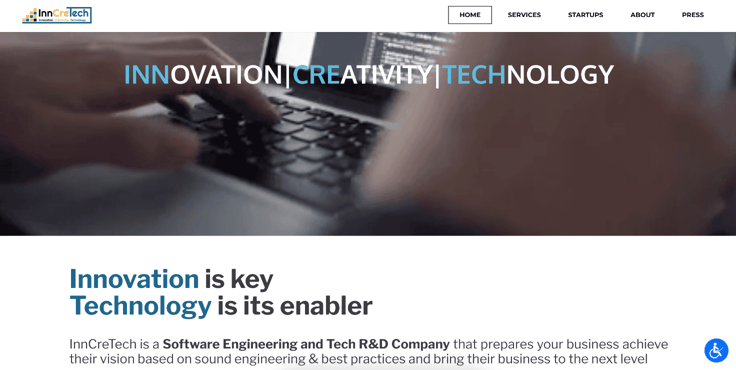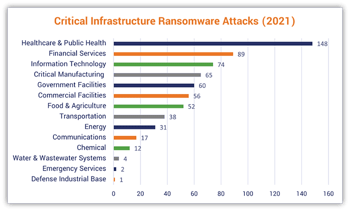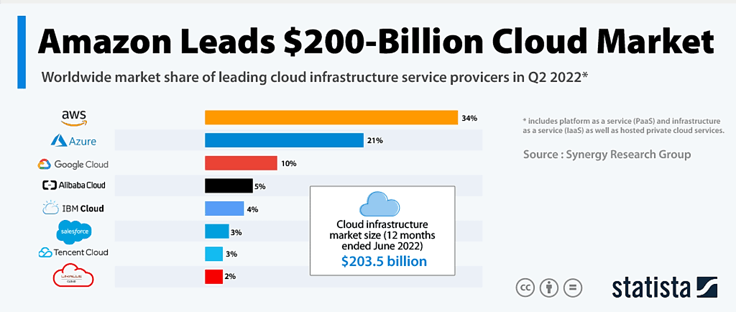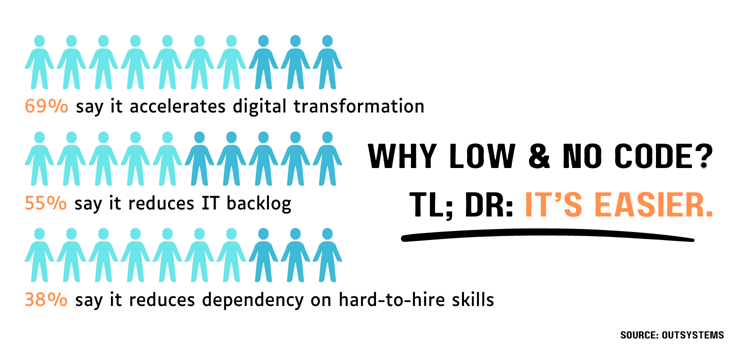
TL; DR: Operating a business of any kind presents challenges that require proper support. Of course, it’s not unheard of for leaders to crave guidance or collaboration to refine strategies, overcome obstacles, and establish growth opportunities. InnCreTech, a dedicated software engineering and research development company, is committed to bringing clients’ visions to life. CEO Ritika Singh talked with us about the common scalability, integration, and innovation challenges small businesses and enterprises face and how InnCreTech aims to be a trusted partner.
“Always plan ahead. It wasn’t raining when Noah built the ark.”
While Cardinal Richard Cushing likely wasn’t talking about scaling tech businesses when he said this, he still made an excellent point: It’s always better to prepare for what may come rather than try to remediate when it’s already happening.
As CEO of InnCreTech, a software engineering and research and development (R&D) company, Ritika Singh believes the company shares a similar mission.
“Don’t wait until you have 100 clients to start thinking about how to scale your business, technology, or team. Even with just 10 clients, start envisioning your growth trajectory toward 100,” Ritika advises. “I’ve witnessed founders become overwhelmed because they waited until the last moment.”

But the challenge is that many business leaders have promising ideas but lack the necessary guidance to thrive, especially when scaling new technology, teams, or projects.
This is where software development companies like InnCreTech can play a vital role in growing small-to-medium businesses and enterprises (SMBs and SMEs).
A Mission Centering on Tailored Solutions
As a software engineering and R&D company, InnCreTech — a portmanteau for Innovation, Creativity, and Technology — aims to help clients leverage advanced technologies to upgrade their legacy systems, scale teams, and navigate regulatory requirements.
InnCreTech specializes in custom-building workflow software, product development, prototypes, and data solutions tailored to meet specific business needs. It also helps major industries with regulatory compliance, such as healthcare, finance, and manufacturing.
Its services include:
- Custom Software: InnCreTech creates tailored software to make businesses run smoother, work faster, and tackle specific challenges faced by clients across different industries and sizes.
- R&D: InnCreTech explores new ideas and technologies to develop innovative products and services that match what clients’ markets need.
- Data Analytics: InnCreTech uses data analysis to find important insights, make better decisions, and help businesses grow.
One of its use cases for data analytics involves extracting critical insights from application interaction data for a famous food company in the eCommerce industry. Another involves conducting a series of speed dating experiments to understand which attributes influence the selection of a romantic partner.
Ritika emphasizes that most of these solutions are responses to three specific problems most startups face: raising capital, generating more revenue, and scaling the team appropriately.
But while raising capital is often a priority for many leaders, how to scale the team is something many may not consider right away.
“If you’re building a good product, you need good people. Otherwise, you can’t scale,” Ritika says. “Technology is a big investment for startups, and choosing the wrong tech partnerships or technology stack can be costly in terms of both time and money.”
With this in mind, InnCreTech prioritizes ensuring client technology components are optimized for things like scaling teams and technology infrastructure.
In fact, Ratika stresses modernizing IT infrastructure is crucial to staying competitive in today’s rapidly changing tech landscape.
Modernizing IT Infrastructure Isn’t Easy — But It’s Necessary
In the ’90s and 2000s, the primary concern about the internet was “stranger danger.” People were cautioned against sharing personal information like their name, age, or address in online chat rooms due to the anonymity and potential risks of interacting with dangerous people.
While the cautionary warnings are, of course, still relevant today, there’s been a notable expansion and shift in focus: The emphasis moved beyond interpersonal risks to include cybersecurity threats posed by hackers exploiting network and security system vulnerabilities.

While modern IT infrastructure enhances operational efficiency, it also helps protect businesses against cyberthreats and data breaches.
Unfortunately, many companies wait for a breach before considering revamping digital infrastructure.
“Outdated legacy systems are more open to cyberthreats and have become so obsolete that high schoolers can get into them. Then you have to go to the public and apologize about a data breach, which nobody wants to do,” Ritika says. “Think about it: Every few months, we see something in the news about how this company or that company is apologizing for going through a massive data breach.”
Another issue is integration, Ritika said. Even though so much technology today has integration capabilities to work with legacy systems, legacy systems still struggle to integrate with newer technologies — causing companies to consider replacing them.
Upgrading IT solutions can also reduce operational costs associated with maintenance, hardware upgrades, and scalability. For example, InnCreTech leverages Amazon Web Services (AWS) infrastructure instead of developing everything in-house, significantly reducing development costs by 40% to 50%.

The million-dollar question is: How do you know when it’s time to upgrade? Ritika believes a way to gauge whether a system is working is to let your teams interact.
“I always tell clients, whether startups or midsize companies, that we should let the teams talk to each other,” she says. “I want all my team members — UI designers, testers, frontend, and backend developers — to gather and understand what each part of the team is working on because you never know what kind of problems someone else might be able to solve.”
Ritika also always tells InnCreTech clients there are so many solutions to choose from, but the one she always recommends is cloud-based technology.
“They are super efficient, reliable, and greatly reduce the development cost,” she says.
Cloud technologies are also perfect for highly regulated industries like healthcare, finance, and government. Healthcare providers, for example, have to be HIPAA compliant, and finance requires specific ISO certifications.
“Everything is so highly regulated in these industries that we’ve often wondered why these big companies still use outdated systems, and you have such beautiful, simple, and very cheap solutions available?” Ritika explains. “But enterprise businesses can’t even change its logo color from red to deep red without a dozen steps and tons of dollars in investments.”
Something New Up InnCreTech’s Sleeve
For the past year and a half, InnCreTech has been developing a product in collaboration with other companies to pilot before its market launch.
The product is a data science platform designed to custom-create data pipelines and data warehouses, featuring predictive modeling and analytics capabilities. It’s being developed internally to transition InnCreTech into a product-first company.
InnCreTech also integrated generative AI into the new product to develop a workflow automation module. For instance, Ritika says users can request the AI’s guidance on creating specific charts with designated data, among other use cases.
“With this tool, you don’t need to hire a data scientist to write your SQL query,” Ritika says. “Just give your custom question, and the system will do it for you.”

This innovation comes amid the rising popularity of low- to no-code solutions and generative AI, which democratizes access to advanced data science capabilities.
Democratization allows teams with limited technical expertise to leverage more sophisticated tools so data analytics is more accessible across diverse teams and industries. In fact, Ritika believes it’s another way for teams to collaborate more.
“When teams interact and share their problems and solutions, it can lead to valuable insights and collaboration. While not every interaction may result in immediate benefits, the exchange often leads to valuable feedback or suggestions where the other teams may benefit,” says Ritika.
InnCreTech’s product release has not been announced yet, but in the meantime, you can consult with its expert team about anything related to software engineering — from data collection and prototyping to custom software solutions and team scaling. Contact the team today.



